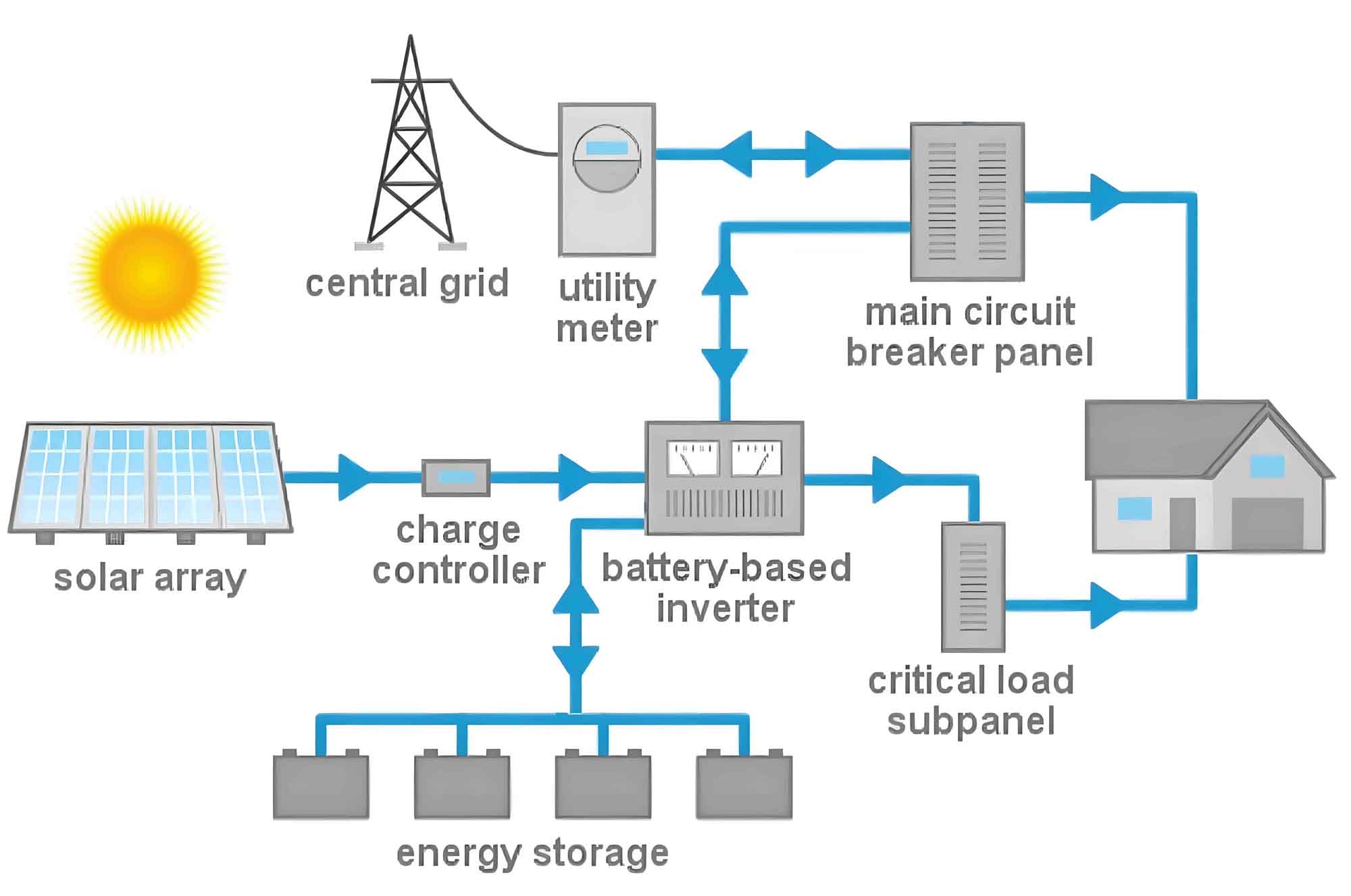Modern home solar energy system has become increasingly popular as homeowners seek to reduce their carbon footprint and save on energy costs. With advancements in technology, the efficiency and affordability of home solar energy system has improved significantly. This article outlines the best practices for modern home solar energy system, focusing on system design, installation, maintenance, and optimization.

System Design
Assessing Energy Needs
Before installing a home solar energy system, it is crucial to assess your household’s energy needs. This involves evaluating your current energy consumption and estimating future usage. Consider the following steps:
- Analyze Energy Bills: Review your past energy bills to determine your average monthly and yearly consumption.
- Energy Audit: Conduct an energy audit to identify areas where energy efficiency can be improved, potentially reducing the size of the solar energy system required.
- Future Usage: Consider any future changes that may affect your energy consumption, such as adding new appliances or expanding your home.
Choosing the Right Solar Panels
Selecting the appropriate solar panels is critical to the efficiency and cost-effectiveness of your home solar energy system. Key factors to consider include:
- Efficiency: Higher efficiency panels generate more electricity per square foot but may come at a higher cost.
- Durability: Look for panels with strong warranties and proven durability to withstand various weather conditions.
- Aesthetics: Consider the appearance of the panels and how they will integrate with your home’s architecture.
Table 1: Comparison of Solar Panel Types
| Panel Type | Efficiency (%) | Lifespan (Years) | Cost per Watt ($) |
|---|---|---|---|
| Monocrystalline | 15-20 | 25-30 | 0.80-1.50 |
| Polycrystalline | 13-16 | 20-25 | 0.70-1.00 |
| Thin-Film | 10-12 | 10-20 | 0.50-0.80 |
Installation
Selecting a Qualified Installer
Choosing a qualified installer is essential for the successful implementation of your home solar energy system. Here are some tips for selecting the right installer:
- Certifications and Licenses: Ensure the installer is certified by a recognized organization, such as the North American Board of Certified Energy Practitioners (NABCEP), and holds the necessary local licenses.
- Experience: Look for installers with a proven track record and experience in installing home solar energy system.
- References and Reviews: Check customer reviews and ask for references to gauge the installer’s reputation and reliability.
Site Assessment
A thorough site assessment is necessary to determine the optimal placement and orientation of the solar panels. Consider the following:
- Roof Condition: Ensure your roof is in good condition and can support the weight of the solar panels.
- Orientation and Tilt: Position the panels to maximize sunlight exposure, typically facing south in the Northern Hemisphere and north in the Southern Hemisphere.
- Shading: Identify and mitigate any shading issues from trees, buildings, or other obstructions.
Maintenance
Regular Inspections
Regular inspections are vital to maintaining the efficiency and longevity of your home solar energy system. Key inspection points include:
- Panel Cleanliness: Clean the panels periodically to remove dust, dirt, and debris that can reduce efficiency.
- Wiring and Connections: Check for any loose or damaged wiring and connections.
- Inverter Performance: Ensure the inverter is functioning correctly, as it is crucial for converting the generated DC electricity to AC electricity for household use.
Monitoring System Performance
Utilize monitoring systems to keep track of your home solar energy system’s performance. Many modern systems offer online monitoring platforms where you can:
- Track Energy Production: Monitor daily, monthly, and yearly energy production to ensure home solar energy system is performing as expected.
- Detect Issues: Receive alerts for any performance issues or faults, allowing for timely maintenance and repairs.
- Analyze Trends: Analyze performance trends to identify potential improvements or upgrades.
Table 2: Maintenance Checklist for Home Solar Energy System
| Maintenance Task | Frequency | Description |
|---|---|---|
| Panel Cleaning | Quarterly | Clean panels with water and a soft brush or cloth. |
| Visual Inspection | Biannually | Check for damage or wear on panels, wiring, and mounts. |
| Inverter Check | Monthly | Verify inverter is operating correctly and efficiently. |
| Performance Monitoring | Continuous | Use monitoring software to track system performance. |
| Professional Inspection | Annually | Hire a professional to conduct a comprehensive inspection. |
Optimization
Maximizing Efficiency
To maximize the efficiency of your home solar energy system, consider implementing the following strategies:
- Energy Storage: Install a battery storage system to store excess energy generated during the day for use at night or during power outages.
- Smart Home Integration: Integrate your solar energy system with smart home technologies to optimize energy use and reduce waste.
- Energy-Efficient Appliances: Replace old appliances with energy-efficient models to reduce overall energy consumption.
Upgrading Components
As technology advances, upgrading components of your home solar energy system can lead to significant improvements in performance and efficiency. Consider the following upgrades:
- Higher Efficiency Panels: Replace older panels with newer, more efficient models to increase energy production.
- Advanced Inverters: Upgrade to inverters with better efficiency and additional features, such as battery storage compatibility and smart home integration.
- Improved Monitoring Systems: Implement advanced monitoring systems that provide more detailed data and analytics.
Conclusion
Implementing a home solar energy system is a significant investment that can provide substantial environmental and financial benefits. By following best practices in system design, installation, maintenance, and optimization, homeowners can ensure their solar energy system operates efficiently and effectively for many years. Regular inspections, performance monitoring, and staying informed about technological advancements are key to maximizing the benefits of your home solar energy system.
